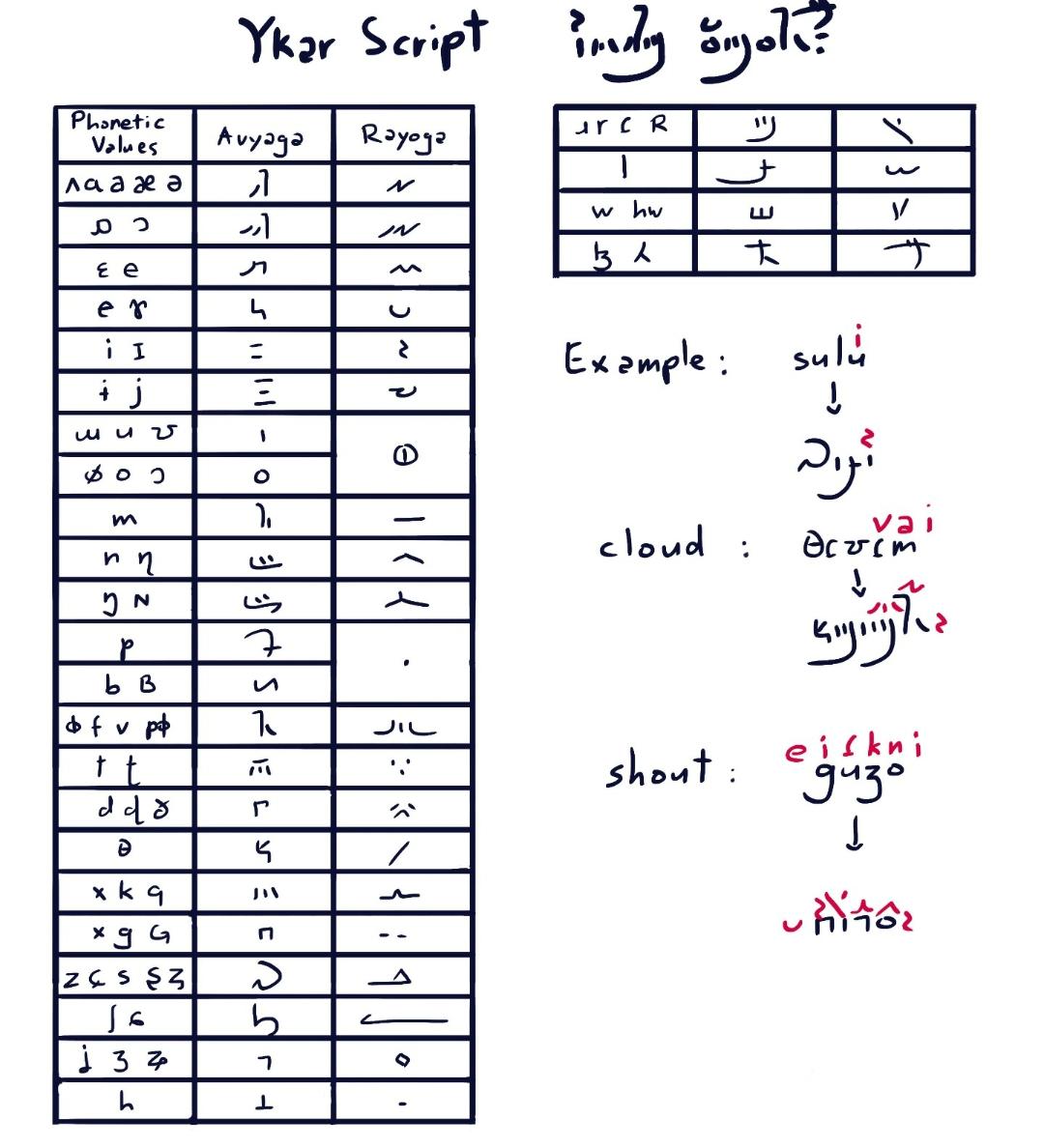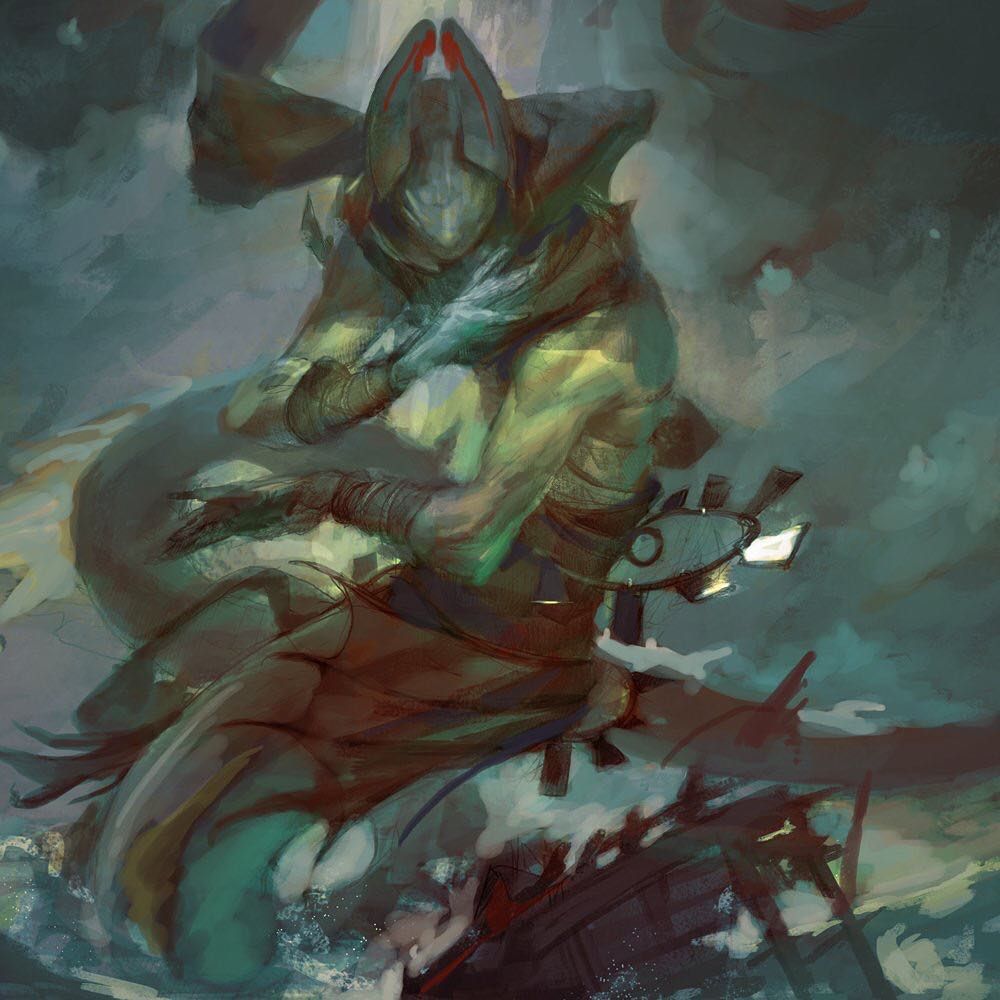Noo's script list
Currently: 8
"Neat! it's Sumer! They invented: clay. Which they used to talk about: wheat. They had a lot of fun."
Sásà sá, the one thousand faces script
Not a Picrew, Sásà Sá is the script used to write Sáthî, an Eastern Yutoic language spoken by around 40 million people mainly in the Kólté Kingdom in the First East. This script is a left-to-right false syllabary non-linear alphabet, similar to the Korean hangeul script, with syllabic blocks made of independent symbols for each phonetic sound. It is famous for being made to imitate expressive faces that Kólté people used to draw traditionaly in this style in accompany of short texts as letters or adverts to express emotions just like emojis, until the prince Làm Pô created phonetic rules to express himself enteirely with faces in his correspondence. The Sásà Sá script became popular over time and replaced the more boring Ancient Kólté script, which now is only used in temples or official documents. Vowel letters represent eyes, with their tones becoming pupils, while initial syllable consonants represent the mouth and final syllable consonants are drawn both as eyebrows or noses, so the order of reading is mouth-eye-eyebrow/nose which may be a little confusing for people who start learning it.Ykar double alphabet
Ykar alphabet is the standard script for all the Forest People languages, making it most used script of Noo. Created by the Thårai villagers of the rainforest region of the Fifth West in order to communicate with their neighbours and sea travelers because the previous logographic script was too complex. Ykar writing became also used to complement logographic characters and gradually the two scripts combined into modern Thårai script. Since Forest People began to use portal technology to travel, Thårai became lingua franca and thus Ykar alphabet became to spread in other rainforests over twelve continents. As Forest People can talk simoultaneosly with two voices, there are two symbols for every sound, the avyaga, and the rayoga, a double script for a double language. When the two of them are pronounced at the same time the rayoga letters are written above avyaga letters.Taulit script family
Used over the First East, the Ancient Taulit Script came from ancient Kuine glyphs and became the official script of the Taulit civilization, 1500 years ago. Over time evolved into the Western Taulit and the Eastern Taulit scripts which are widely used within literate people of the First East. A few other endangered branches developed from Ancient Taulit but are only used by minorities, and also Modern Kuine is related to this family. Ancient Taulit glyphs are used in a limited extent in some temples or in traditional context. Taulit scripts are left-to-right alphasyllabaries containing characters to represent vocal, consonant, consonant+vocal and vocal+consonant, though the two last types don't cover all permutations of vocals and consonants, so there is a diacritic that reverse de syllable and allow to write the missing ones. There are also characters to represent diphtongs in some scripts. In the following charts the consonant-vowel and vowel-vowel characters are written in blue while the red characters are vowel-consonant.Hmyumyu flowers and birds
Used in the Hmyumyu Peninsula of the Second West to write diverse Eastern Foroeic languages. The Flower script was created by Hmyumyu priests for religious and decorative uses, while the Bird script developed from Old Hmyumyu abjad. The legend says it was originated by a calligrapher named Kekeratusasiat, after winning a competition after the sky spirit O Luoluosuasai made seven volcanoes erupt as a punishment for having the most ugly script of the Second West, because seeing her name written like that made her furious. The kings of the Hmyumyus opened a contest to find the most beautiful writing, and the Bird Script appeased the spirit because Kekeratusasiat knew O Luoluosuasai loved birds. Peace returned to Hmyumyu lands and Kekeratusasiat recieved the ability to fly. There are alternative versions of the legend saying that Flower Script became second in the competition, but it is thought that this script was invented much later. Despite this story, Old Hmyumyu is the standard script because the other ones are pretty but impractical. Bird script is used to write the most important parts of a text, and also to write poetry or people names, specially the name O Luoluosuasai in order to avoid future destruction.Old Hmyumyu and the bird version
Old Hmyumyu and Bird Script are both right-to-left scripts having only 15 and 14 letters, and based of only three shapes, so it's thought this symple structure derived from an unknown shorthand. Old Hmyumyu is an abjad while Bird Script could be considered a calligraphic abugida because it reveals the vocal sound modifying the anatomy of the bird drawn. As most Eastern Foroeic languages contain reduplication, in Bird Script an egg is drawn instead of a copy of the previous bird. This feature was brought also to the standard Old Hmyumyu.The decorative Flower Alphabet
Hmyumyu Flower is an alphabet where letters represent petals and are glued around others in order to make flower words. Flowers contain between three and six letters, without counting reduplication which is written with two points, but if the word is longer another flower is attached to complete the word. The reading is clockwise and the starting letter is the one that comes after a point or the one that comes after a link between two flowers, but be careful because attached flowers change to the opposite reading direction, like a gear.Note: This article contains many geographic locations not included in the map because it's empty yet.
Remove these ads. Join the Worldbuilders Guild
















I love all the scripts, they all amazing! Great job :D
Love to code, but this one is driving me crazy!
My world Shattered won as the "Most ground-breaking premise new world"!
Thanks! ^w^